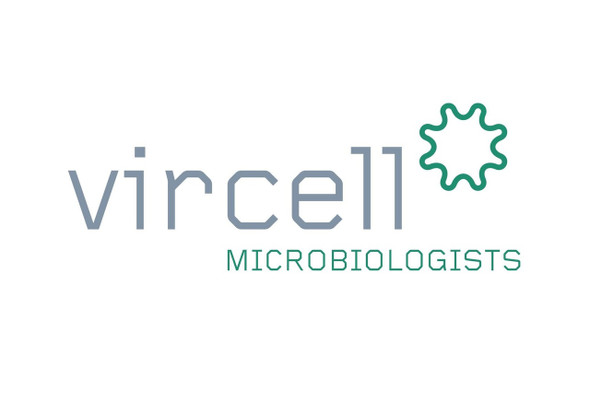Description
LEGIOTAG LEGIONELLA PNEUMOPHILA SPECIFIC LABEL
Functional tools such as chemical reporters are very useful to help understand complex biological systems. They can be used in conjunction with bioorthogonal labeling methods to image and retrieve nucleic acids, proteins, glycans, lipids and other metabolites in vitro, in cells as well as in whole organisms. This approach is extremely useful for the rapid and specific detection of pathogenic bacteria which are often present at very low concentration, in complex samples. LegioTag, Legionella pneumophila specific label is a 6-Azido-2,4-diacetamido-2,4,6-trideoxy-D-mannose (Man2NAc4NAc6N3) analogue of the natural 2,4-diacetamido-2,4,6-trideoxy-D-mannose which contains an azido moiety, for species-specific detection and labeling of Legionella pneumophila.
PRODUCT DETAILS – LEGIOTAG LEGIONELLA PNEUMOPHILA SPECIFIC LABEL
- LegioTag, Legionella pneumophila specific label for species-specific detection and labeling of Legionella pneumophila.
- 6-Azido-2,4-diacetamido-2,4,6-trideoxy-D-mannose (Man2NAc4NAc6N3) is an analogue of the natural 2,4-diacetamido-2,4,6-trideoxy-D-mannose which contains an azido moiety.
- Can discriminate L. pneumophila serogroup 1 from other Legionella not belonging to the pneumophila species (including L. gormanii, L. maceachernii, L. micdadei, L. anisa, L. feeli, L. jordanis, L. tucsonensis, and L. bozemanii). Strains tested include; L. pneumophila SG1 (Paris), L. pneumophila SG1 (Lens), L. pneumophila SG1 (Philadelphia), L. pneumophila SG3, L. pneumophila SG4, L. pneumophila SG5, L. pneumophila SG6.
- Can also detect L. pneumophila strains belonging to serogroups 3, 4, 5, 6 but not serogroup 7.
BACKGROUND
Metabolic glycan labeling is a very powerful method for studying cell-surface glycans, which has wide ranging applications including imaging glycans in living organisms. This strategy relies on the cellular biosynthetic machinery incorporating a modified monosaccharide that contains a bioorthogonal chemical reporter. The metabolic incorporation of this reporter into glycans can be further visualized by chemical ligation (click chemistry) with a label, such as a fluorescent probe. Click chemistry reactions commonly join a biomolecule and a reporter molecule (bioconjugation) by the Huisgen copper-catalyzed coupling of a terminal alkyne with a terminal azide to exclusively form a 1,2,3-triazole unit. A major benefit of the click reaction is its reactant specificity and tolerance of other functional groups as well as high conversions in virtually any solvent and at relatively low temperatures. This reaction can be carried out on live cells, using small molecule probes that find and attach to their targets by click reactions. Labelled cells can then be visualised using flurescence probes for fluorescence microscopy/spectroscopy, confocal microscopy, flow cytometry (FCM) and fluorescence-activated cell sorting (FACS) etc. Cells can also be coupled to magnetic beads for pulldown experiments or other tags, such as biotin, for isolation and purification. Click chemistry armed ELISAs have also been developed (Lanyon-Hogg et al., 2015). LegioTag is an azide-functionalized Legionaminic acid (LEG) molecule for metabolic lipopolysaccharides (LPS) labeling of Legionella pneumophila. LEG is an essential lipopolysaccharide which is incorporated by L. pneumophila into its cell wall during active glycan biosynthesis. When cell-permeable LegioTag is added to an actively growing culture containing L. pneumophila it is intracellularly processed and utilized instead of its natural LEG counterpart. Using Cu(I)-catalyzed (CuAAC, terminal alkyne) or Cu(I)-free (SPAAC, strained alkyne) ‘click chemistry’ between an azide and an alkyne or cyclooctyne, this azide-modified glycan can then be labelled with either a fluorescent alkyne for imaging or a biotin alkyne for purification. Azide and alkyne groups conjugate to one another with high efficiency but do not react or interfere with other functional groups found in biological samples. LegioTag can be added directly to a Gram-negative bacteria culture in log growth phase, following dilution in fresh media. The culture is then incubated overnight at the appropriate temperature. Following incubation, the culture is washed with buffer prior to labeling by ‘click chemistry’ using a commercially available Cell Reaction Buffer Kit and Alkyne labelled probe. A variety of different probes are available which can be used for fluorescence detection by microsopy or for bead-based purification, amongst others.
REFERENCES
- Dumont et al. (2012). Click-mediated labeling of bacterial membranes through metabolic modification of the lipopolysaccharide inner core. Angew Chem Int Ed Engl. 51(13):3143-6.
- Fugier et al. (2015). Rapid and Specific Enrichment of Culturable Gram Negative Bacteria Using Non-Lethal Copper-Free Click Chemistry Coupled with Magnetic Beads Separation. PLoS ONE 10(6): e0127700.
- Lanyon-Hogg et al. (2015). Click chemistry armed enzyme-linked immunosorbent assay to measure palmitoylation by hedgehog acyltransferase. Analytical biochemistry, 490, 66–72.
- Mas Pons et al. (2014). Identification of living Legionella pneumophila using species-specific metabolic lipopolysaccharide labeling. Angew Chem Int Ed Engl. 53(5):1275-8.






